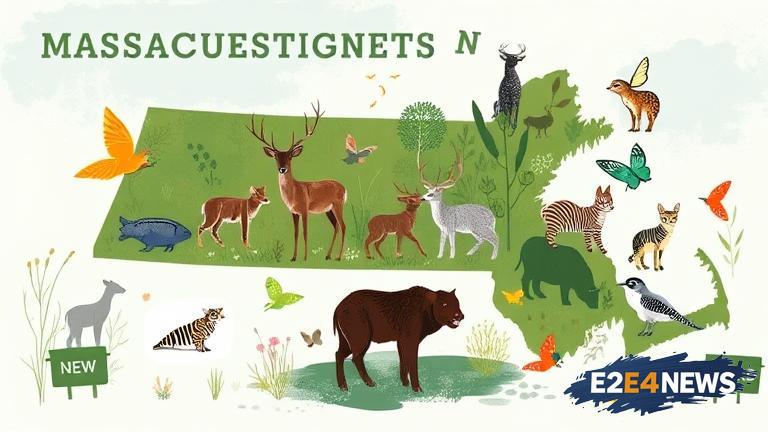The Massachusetts 2025 State Wildlife Action Plan is a comprehensive plan that outlines the state’s strategy for conserving and protecting its wildlife and natural habitats. The plan is designed to address the growing concerns of climate change, habitat loss, and species decline. It identifies key areas of focus, including the conservation of priority species, the protection of critical habitats, and the promotion of sustainable land-use practices. The plan also emphasizes the importance of community engagement and outreach, recognizing that the success of conservation efforts depends on the involvement and support of local communities. The 2025 plan builds on the successes of previous plans, incorporating new research and data to inform its recommendations. It highlights the need for continued collaboration between state and federal agencies, non-profit organizations, and private landowners to achieve its goals. The plan’s authors note that Massachusetts is home to a diverse range of wildlife, including endangered species such as the northern long-eared bat and the eastern box turtle. The plan identifies key habitats, including forests, grasslands, and wetlands, that are essential for the survival of these species. It also recognizes the importance of urban and suburban areas, where wildlife often comes into conflict with human development. The plan proposes a range of strategies for mitigating these conflicts, including the creation of wildlife-friendly habitats and the implementation of smart growth practices. In addition to its focus on species conservation, the plan also addresses the need for climate resilience and adaptation. It recognizes that climate change poses a significant threat to Massachusetts’ wildlife and ecosystems, and proposes a range of strategies for reducing greenhouse gas emissions and promoting sustainable land-use practices. The plan’s authors emphasize the importance of monitoring and evaluation, recognizing that the success of conservation efforts depends on the ability to track progress and adapt to changing circumstances. The 2025 plan is the result of a collaborative effort between state and federal agencies, non-profit organizations, and private landowners, and reflects the input and expertise of a wide range of stakeholders. Overall, the Massachusetts 2025 State Wildlife Action Plan provides a comprehensive framework for conserving and protecting the state’s wildlife and natural habitats, and serves as a model for other states and regions to follow. The plan’s implementation will require continued collaboration and commitment from all stakeholders, but its authors are confident that it will make a significant contribution to the conservation of Massachusetts’ natural heritage. The plan is available for public review and comment, and its authors encourage all interested stakeholders to provide feedback and input. By working together, Massachusetts can ensure the long-term conservation of its wildlife and natural habitats, and promote a sustainable and resilient future for all.
